Many if not most magical artifacts from mythology are weapons. Many more consist of some other type of equipment or jewelry, like shields and rings. They usually have impressive but ultimately boring powers that have to do with violence, like protecting the wearer from the negative effects of violence, or allowing the wielder to cause violence with great efficacy.
Much more interesting, but also rarer, are the mythical artifacts that create infinite resources. There’s something with the potential to really change the world! Can you imagine the economics of a world where there exists a never-ending supply of food or salt or gold somewhere?
Sure you can: that’s kind of the point of companies and capitalism in general. Create useful resources, without ever stopping, using various inputs and especially human ingenuity. So I was musing on the fact that any of those artifacts would make good startup names. Of course, in most cases I wasn’t the first to think of it.
The Sampo
The Sampo comes from Finnish mythology. In the Kalevala, a collection of epic poems sometimes considered to be Finland’s national epic, the blacksmith god Ilmarinen agrees to forge a magical artifact in exchange for marrying the daughter of enchantress Louhi. He works for several days, first creating a magical crossbow, then a magical ship, then a magical metal cow, then a magical plow, all of which are unsatisfactory and cast back into the forge’s fire until finally Ilmarinen manages to make the Sampo.
We don’t really know what the Sampo is. In the original compilation of the Kalevala, it is interpreted to be a quern stone, a kind of mill that, when operated, conjures flour, salt, and gold out of thin air. Wikipedia lists many other interpretations: “a world pillar or world tree, a compass or astrolabe, a chest containing a treasure, a Byzantine coin die, a decorated Vendel period shield, a Christian relic.” None of this has prevented artists from representing the scene of its forging (and its later theft and loss at sea), although the depictions necessarily remain vague, as in the cover image for this post.
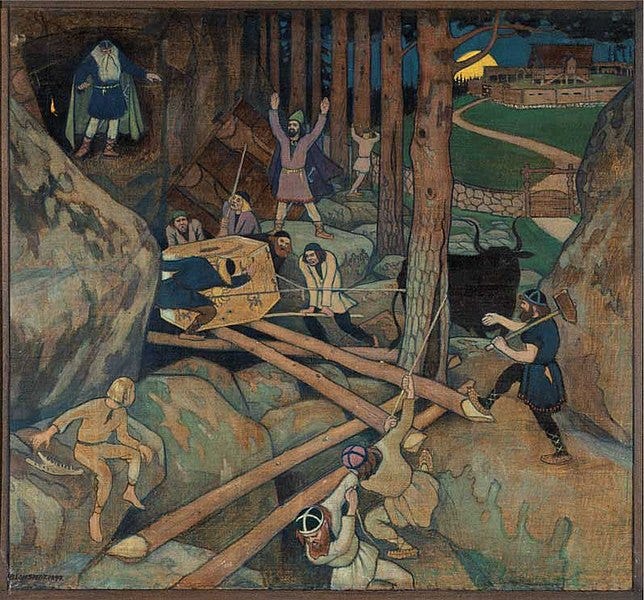
Such a tantalizing artifact — unlimited flour! salt! gold! — has understandably become a popular name in Finland. Many people have received it as a given name. Two icebreaker ships, too. As for companies, the main one is the Sampo Group, which does insurance and is headquartered in Helsinki. (It also originated a Sampo Bank that has become part of Danske Bank.)
Another Finnish company that contains the name is Sampo-Rosenslew. They make combine harvesters for farming.1
On the other side of Eurasia, Sampo is also the name of a Taiwanese company that makes various household items, such as appliances.
But I assume its name is nothing but a fortuitous coincidence.
The Skatert-Samobranka
Not too far from Finland, in the vast lands of Russia, folktales tell of the Скатерть-Самобранка, which Google translates as “self-assembling tablecloth” but is generally rendered as “magic tablecloth.” Supposedly, whenever you lay down the tablecloth, food and tableware magically appear, and similarly, when you’re down, they magically vanish. Practical!
Unsurprisingly, Skatert-Samobranka is the name of a few food-related companies in Russia. The biggest one seems to be a manufacturer of pickled and canned produce:
There’s also what looks like a catering service, another catering service, at least one restaurant, and a meal-kit company.
The Cornucopia
The most famous wealth-creation mythological device is certainly the cornucopia, from Greek legend. We talked about it in my post Reclaiming Cornucopianism, which appropriately was about companies creating endless new things thanks to human resourcefulness. Originally, the cornucopia was the horn of a river god or goat goddess; it is said to produce infinite amounts of produce and flowers. As a result, it has been adapted as a symbol of abundance in myriad ways since Roman times, including various gods, the cornucopian ideology, and the State of California:
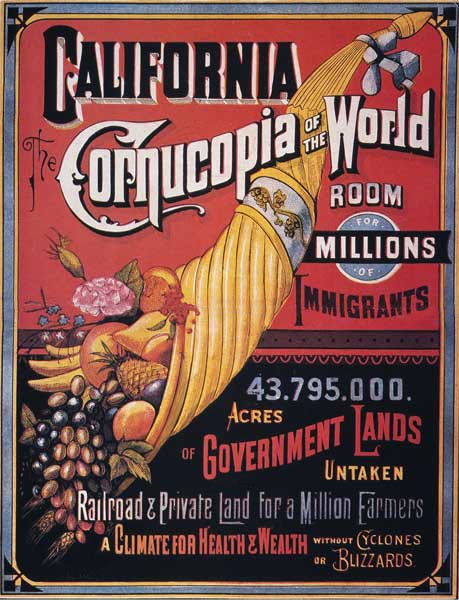
As for companies called Cornucopia, there are too many to list, from popcorn to pet food, from medical equipment to spiritual wellness. So instead let’s just show one clothing company that has never had anything to do with cornucopias, and yet everyone is totally convinced that it’s been their logo forever:
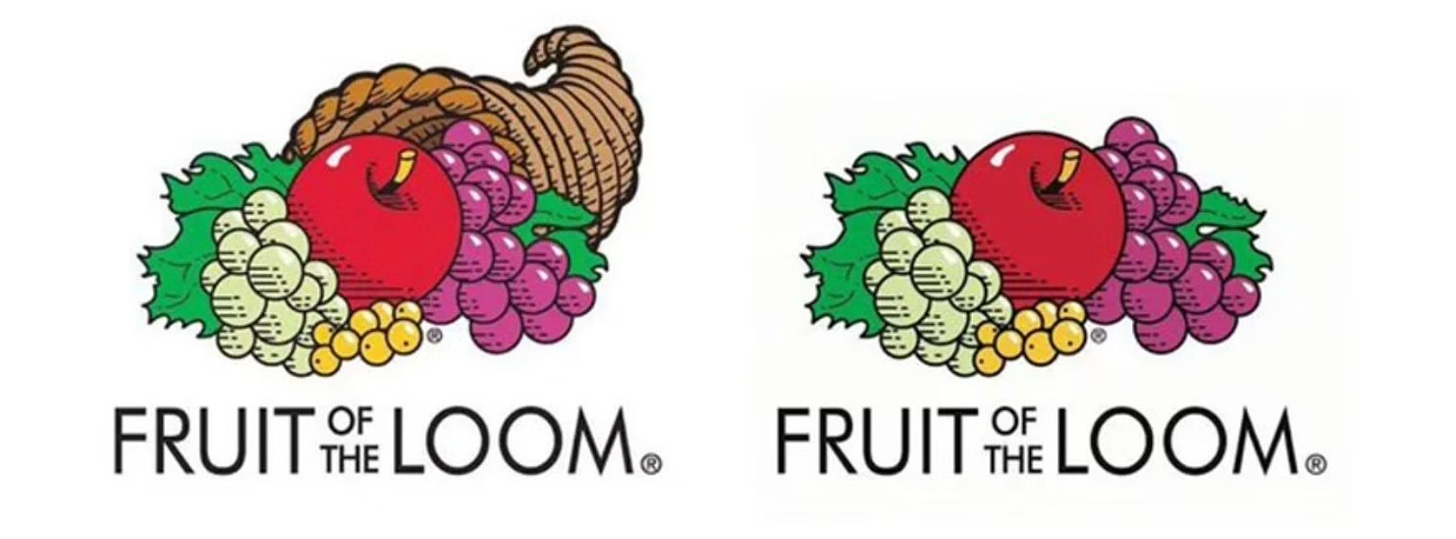
The Akshaya Patra
This means “inexhaustible vessel” in Sanskrit (अक्षयपात्र), and it comes from one of the two big Hindu epics, the Mahabharata. In the Mahabharata, Ms. Draupadi was married to five brothers, the Pandavas. They were all living in extreme poverty in the forest, but important people were coming to visit them, so one of the brothers prayed to the god Krishna, who blessed the polyandrous marriage with the Akshaya Patra. It produced endless food, but with one major limitation: it stopped once Draupadi was done for the day.
To me that seems easy enough to game — Draupadi could just have her last meal five minutes before midnight — but the epic includes shenanigans about an enemy sending a sage to visit the Pandavas after Draupadi was done eating, so that the sage would be angry at not getting any food. So it seems they hadn’t figured it out.
In modern times, Akshaya Patra is the name of a NGO belonging to the religious organization ISKCON (International Society for Krishna Consciousness). Appropriately enough, its goal is to give school meals to children in India.

The Magic Lamp
Most wish-granting devices in tales aren’t really infinite-wealth-creation devices: there is usually some sort of limit. Also, most of the time it’s an entity that grants the wishes, not the device itself. So you could say the magic lamp from Aladdin doesn’t count. After all, the magic comes from the djinn or genie held within, and they’re limited to a grand total of three per person.
I disagree. First, the popular notion of the three wishes comes from later translations and from Disney’s Aladdin. As I discovered when reading the original Aladdin story, no limit is ever discussed. (The only mention of three wishes comes from another 1,001 Nights tale, is discussed solely as a hypothetical, and consists of three wishes per day.) And the genie isn’t really a character in the story: he always just grants the wish and then disappears. So, close to a magical device.
Besides, Aladdin uses it almost exclusively to create riches. At first he uses his lamp to create food and then sell the silverware. Then, after a few years, he grows bolder and asks for gemstones and eventually a magnificent palace which he uses to impress the local sultan and wed his daughter.
In nerdy circles, the magic lamp is the stereotypical infinite-wealth-creation device, more so than the cornucopia: there’s a lot of discussion of how to use the “three wishes” to get infinite amounts of whatever, sometimes by tricking the genie.
What about business circles?
The problem here is that I’m not sure what I’m supposed to look for. “Magic lamp” is too generic and, to the surprise of absolutely no one, finds companies that create fancy lamps for kids:
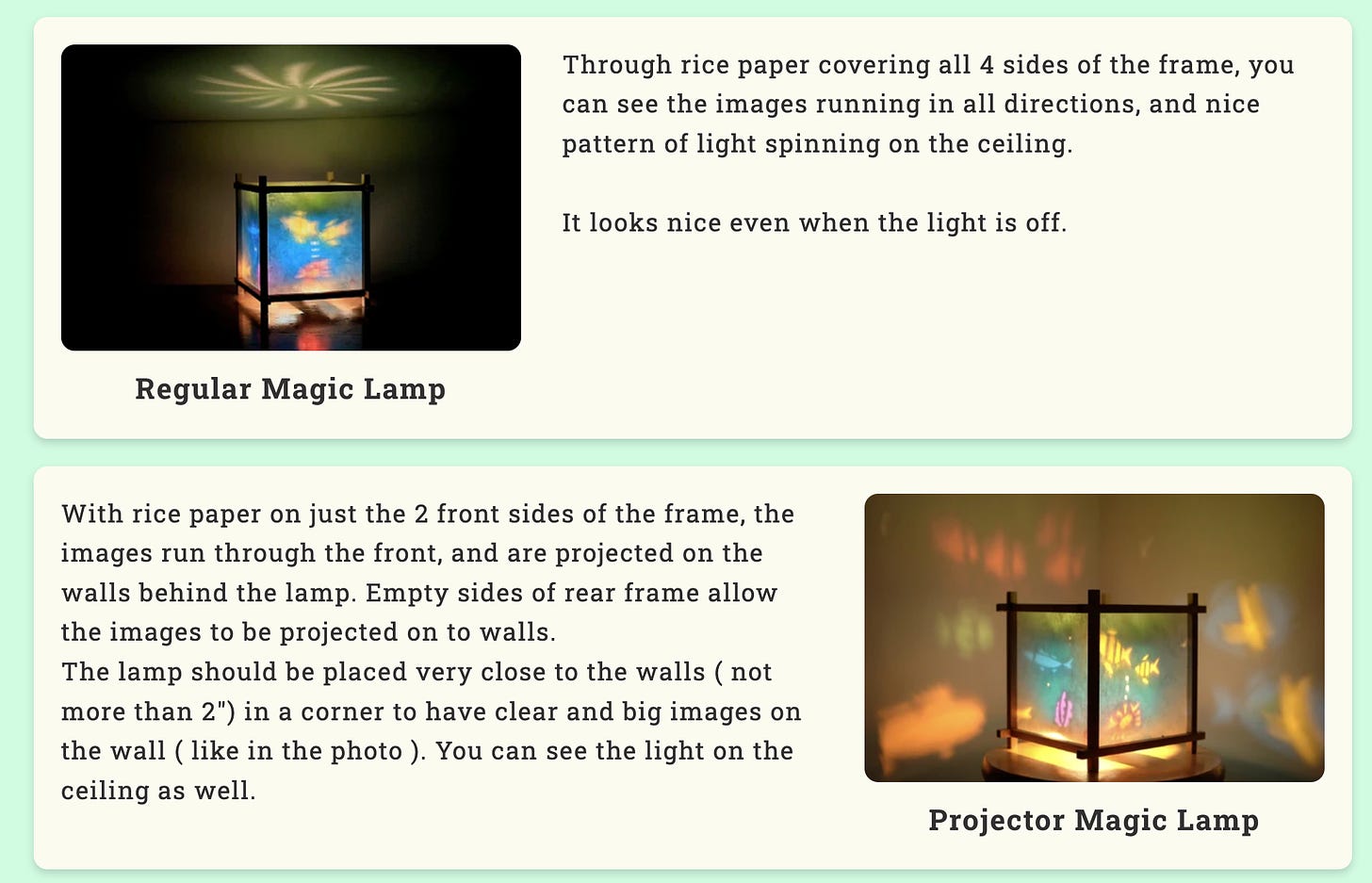
Maybe a bit less expectedly, there’s this marketing agency whose marketing speaks for itself (??):
There’s also consulting:
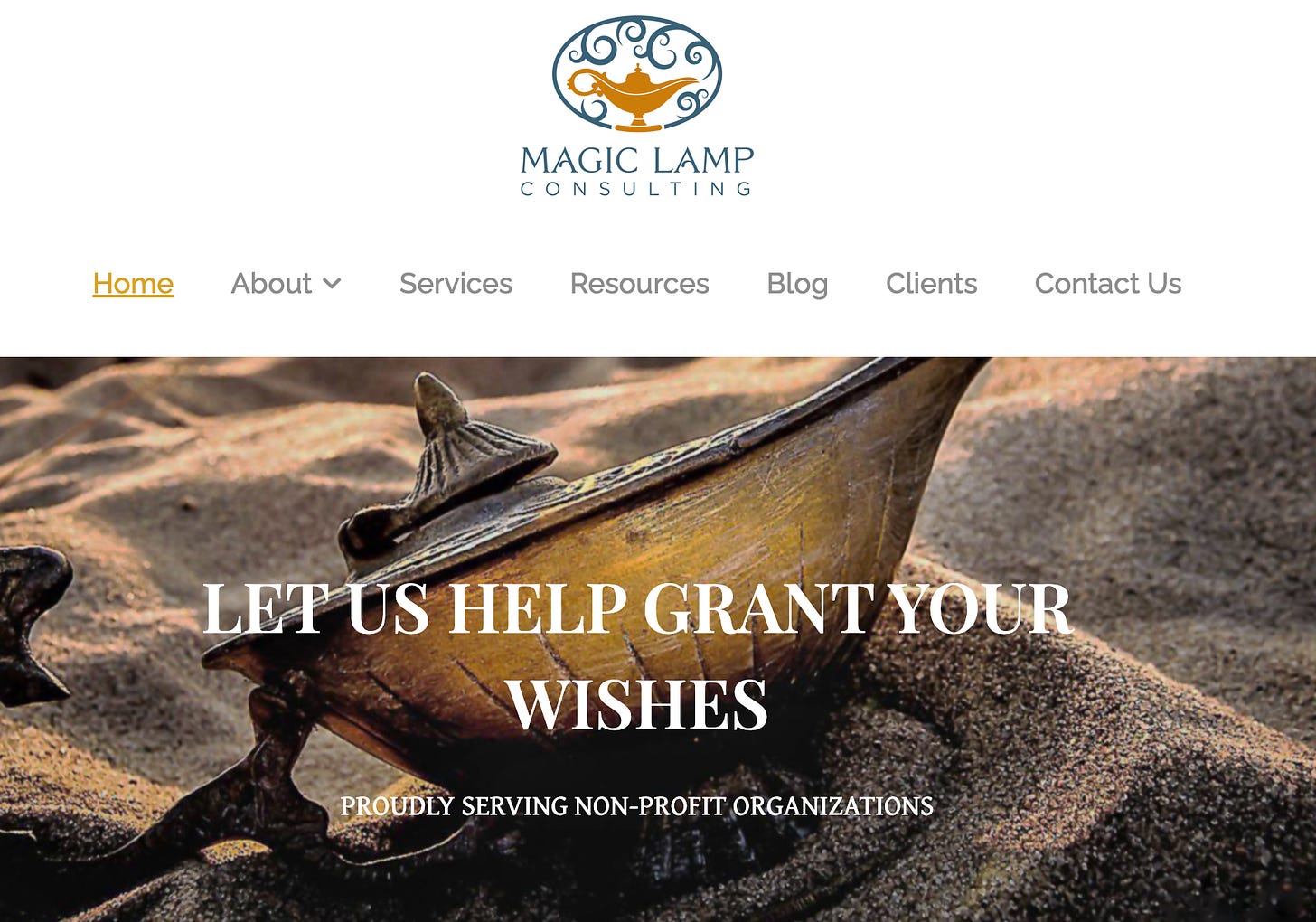
Maybe instead we should scour the web looking for “Djinn” or “Genie” companies. I would do that, except that I immediately found the company with the best aesthetics of all companies in the history of companies, and now I feel like my job here is done.
Fortunatus’s Purse
In this popular tale from late medieval Germany but with dozens of variants across the world, Fortunatus is a young man from Cyprus who comes across the goddess of Fortune. She gives him a magical purse: it always replenishes itself with coins. Equipped with this source of literally infinite wealth, he travels the world, meets a sultan or something, acquires a magical teleportation hat from him, then returns to Cyprus to live in luxury. When he dies his sons inherit the purse and the hat, but they hate each other and some bad thing or other occurs. The End.
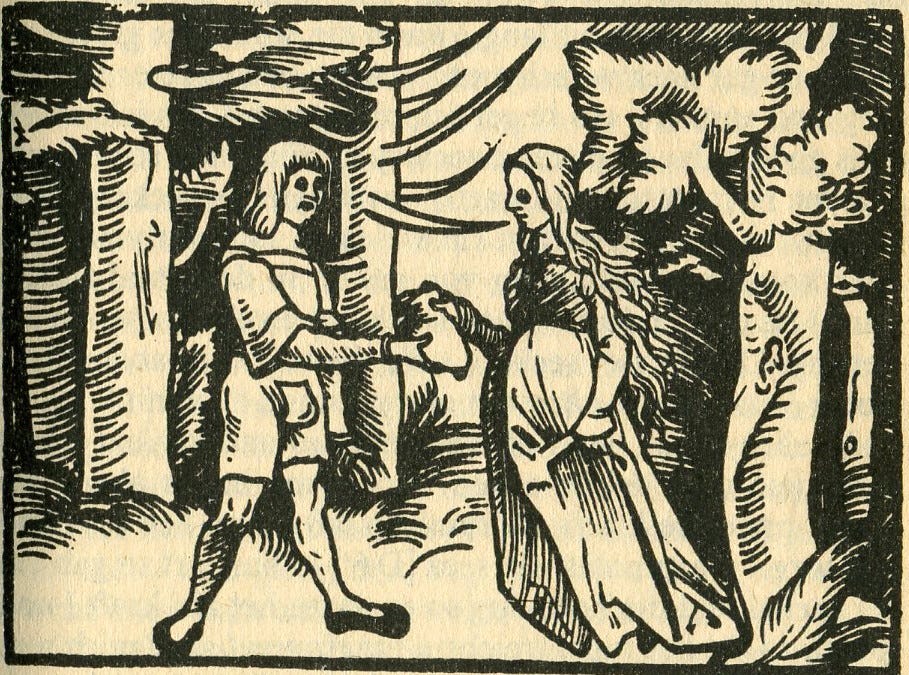
Fortunatus’s name is the least possible subtle one. I would hope no companies would choose to call themselves that. I would be wrong: there’s a recruitment firm, an investment firm, and a store that sells furniture. Honestly I’m almost disappointed there isn’t a venture capitalist fund, a hedge fund, or something similarly hell-bent on trying to conjure money out of thin air.
The Uchide no Kozuchii
At first you would think that the 打ち出の小槌, which literally means “Tap-Appear Mallet,” is not a magical dispenser but rather a weapon. How can a hammer create stuff?
Apparently this one can. It comes up in a number of Japanese folk tales, including the well-known one called Issun-bōshi. It’s about a one-inch young man who defeats an oni (a kind of ogre in Japanese folklore) and steals his magical hammer, then uses it to grow himself to a normal size, and later, having married a princess, to conjure various foods and treasures to make his family prosper. I couldn’t find an explanation of how it works.
Also, I haven’t been able to double-check this because all the sources are in Japanese, but Wikipedia says that the hammer also appears in Buddhist tales from the 12th century, according to which “it can be used to tap out a mansion, amusing men and women, useful servants, horse and cattle, food, and articles of clothing,” but all of that will disappear “at the sound of the bell tolling.” The annoying moral is that whatever comes out of the hammer isn’t real treasure; Buddhism is the real treasure.
I couldn’t find any companies named after the uchide no kozuchi. Maybe that’s because my Japanese googling skills aren’t good enough. However, I did learn that you can buy the uchide no kozuchi!
… or not. All the ones on the “Wabisabi Mart” website like the one above say “sold out.” I guess it’s expected that a magical artifact that can conjure whatever you want would be in too high demand for stores to constantly carry them.
You would think there are more mythical wealth-creation machines than the seven discussed above. You’d be right, technically, but not by much. There really are fewer than one expects. I brought this up with friends earlier today and we all struggled to find good examples.
Why? Maybe because the general idea of beings having the power to create stuff is more common. Here I was explicitly looking for objects, not gods; and even then, we stretched things a bit with the genie in Aladdin.
And of course, almost all of the above are created by gods. They have to be, since they’re magical. And they have to be magical to be impressive and interesting, since otherwise they’re… well, they’re just regular machines, I guess. The difference seems to be that the mythical devices create wealth without any costs, whereas in real life, wealth requires inputs: some mix of material resources, energy, and labor. It doesn’t suffice to have just the machine. Or, more abstractly, the knowledge. A catalyst without any input is inert.
We’re pretty lucky in that we have so much energy at our disposal, in theory, that we can create virtually infinite wealth. So in practice we can consider capitalism, industry, machines, and companies to be the successors to the Sampo, cornucopia, and uchide no kozuchi. We can turn sunlight into riches, and that’s almost as good as conjuring riches out of nothing.
If you do try, and found your own company, you could do worse than pick a name inspired by one of them. Almost all of the companies cited above are unimpressive. Where’s our actually ambitious generic wealth-creation company inspired by mythology?
I went on YouTube the day of writing this post and I got an add for farm machinery, presumably because I looked up this website lol




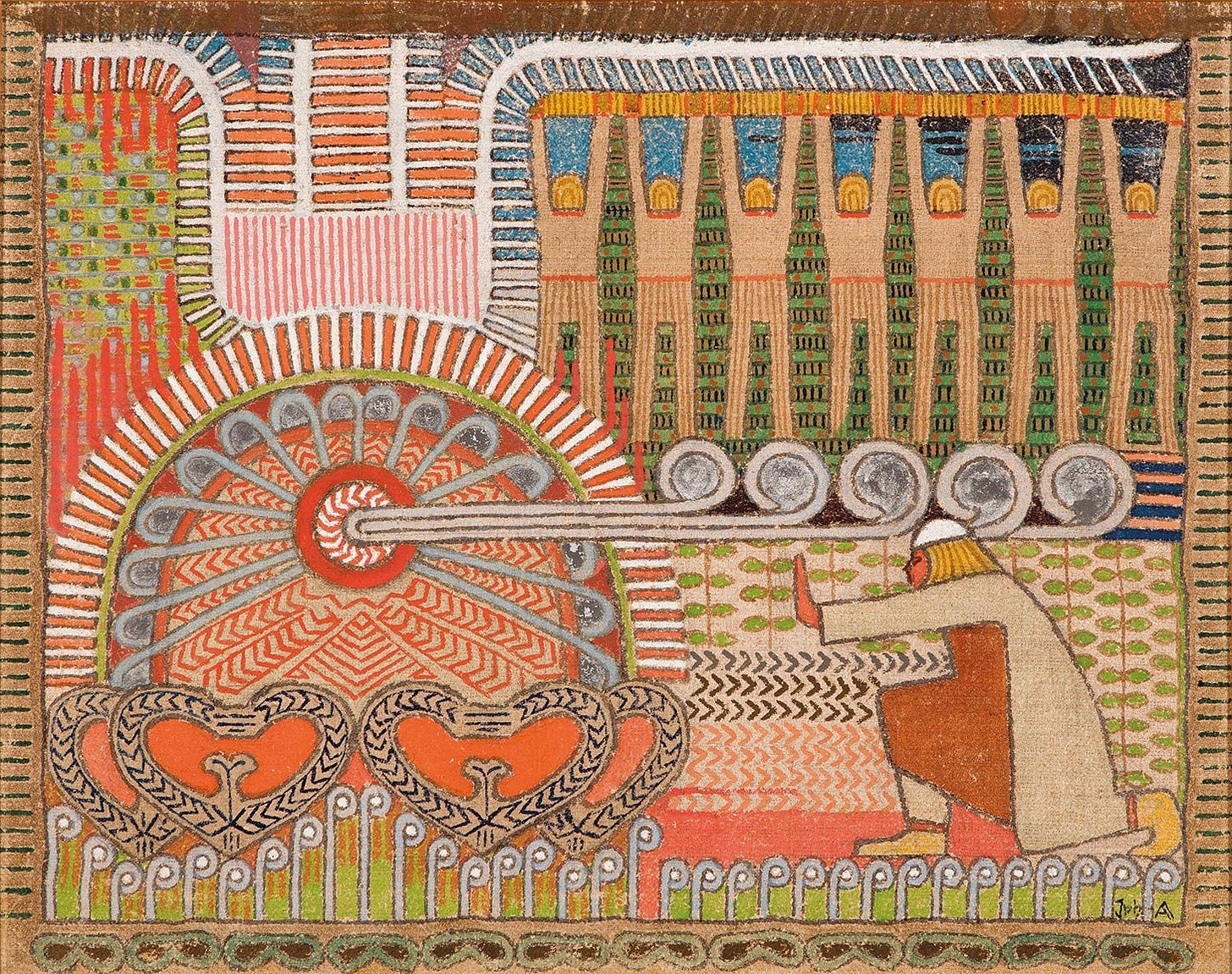
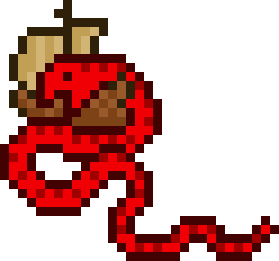


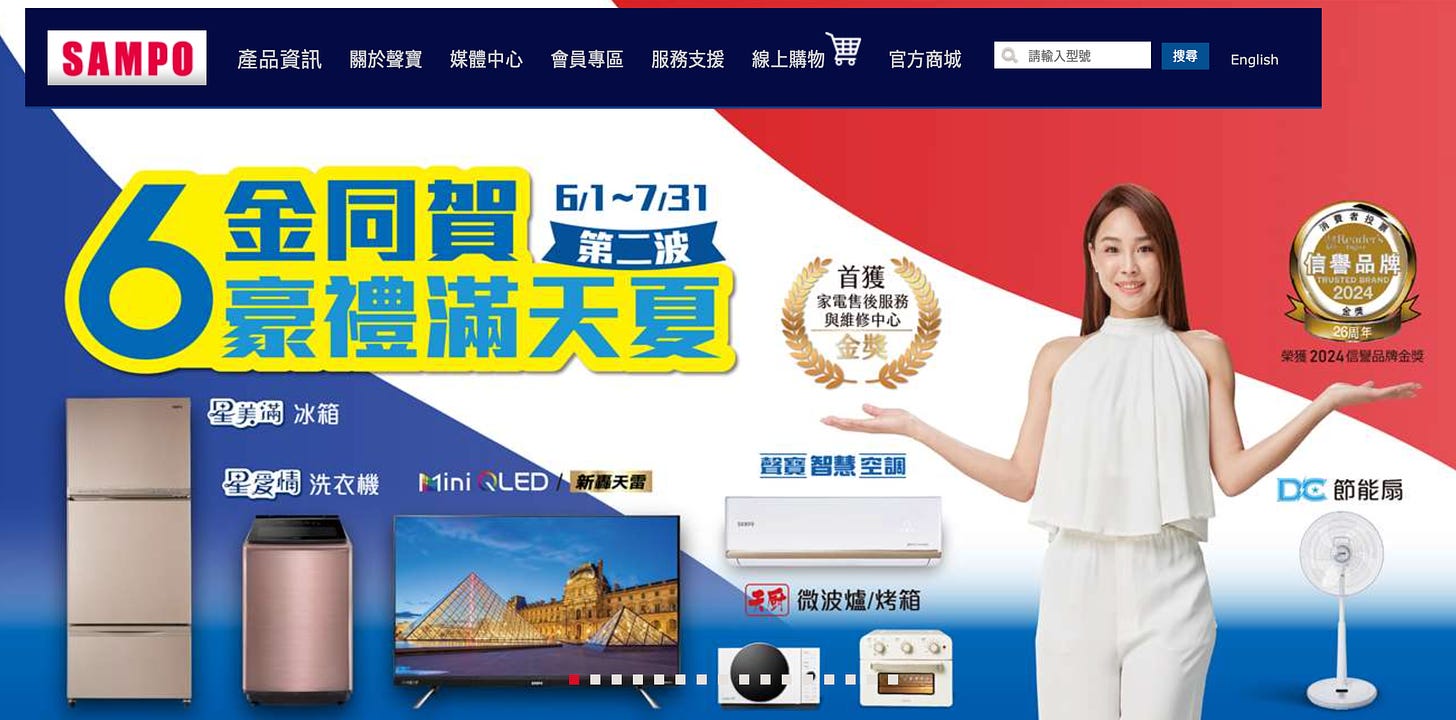

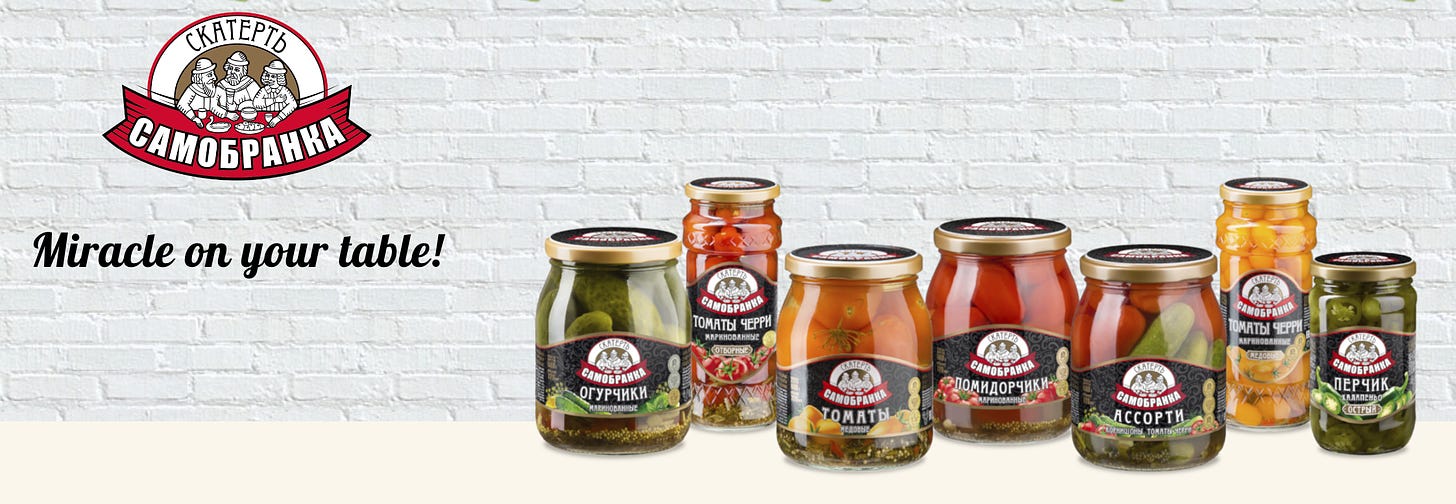
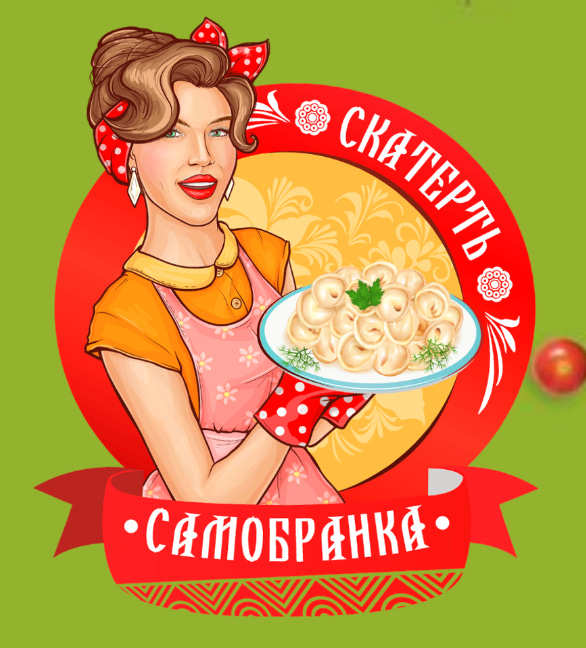
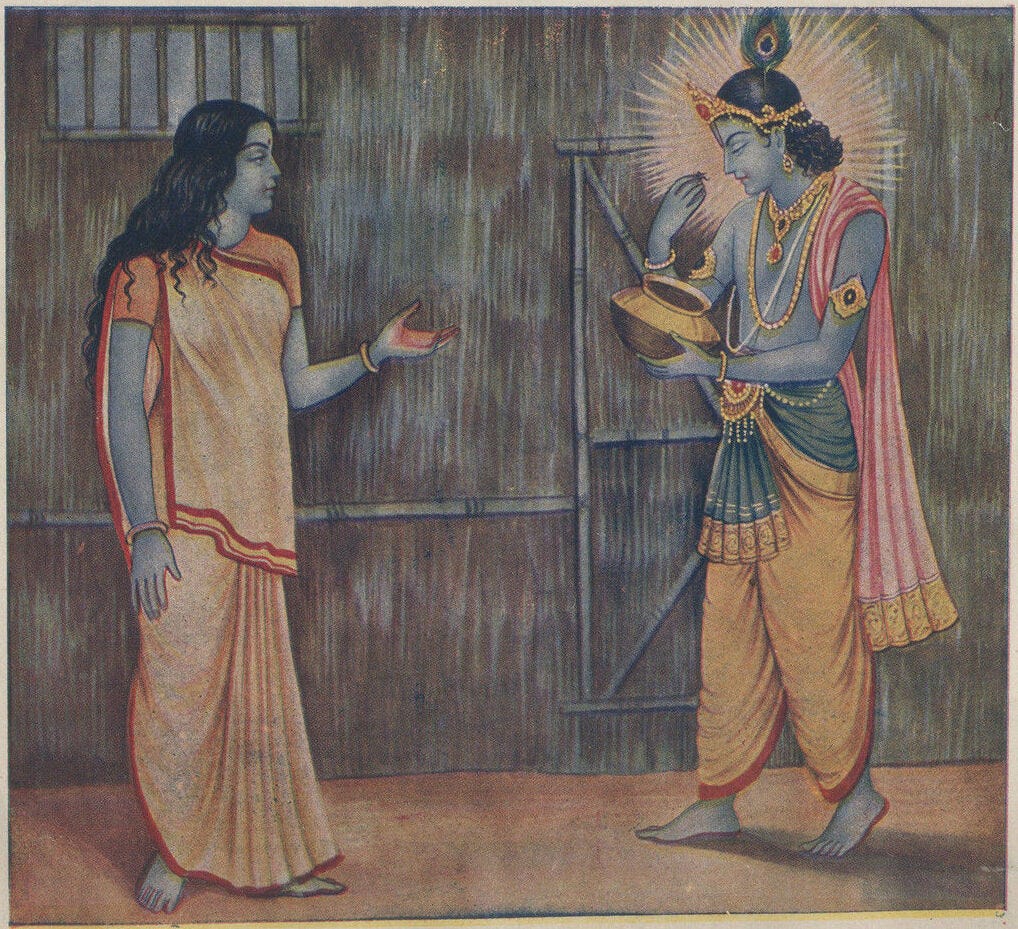
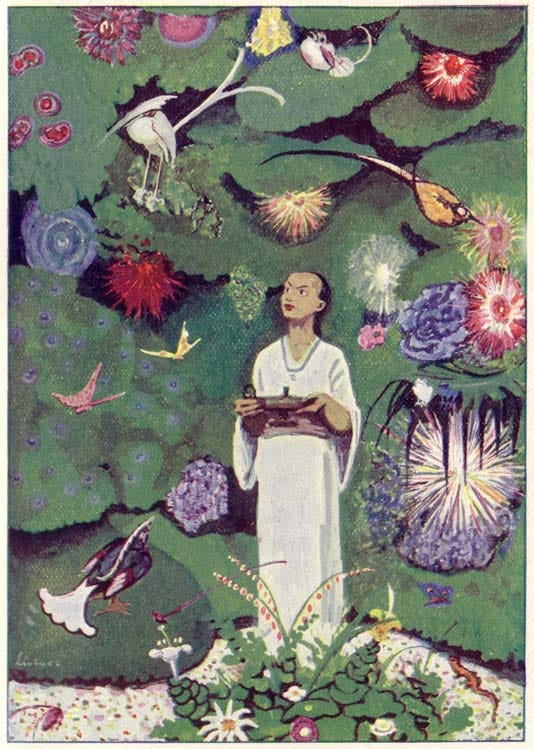

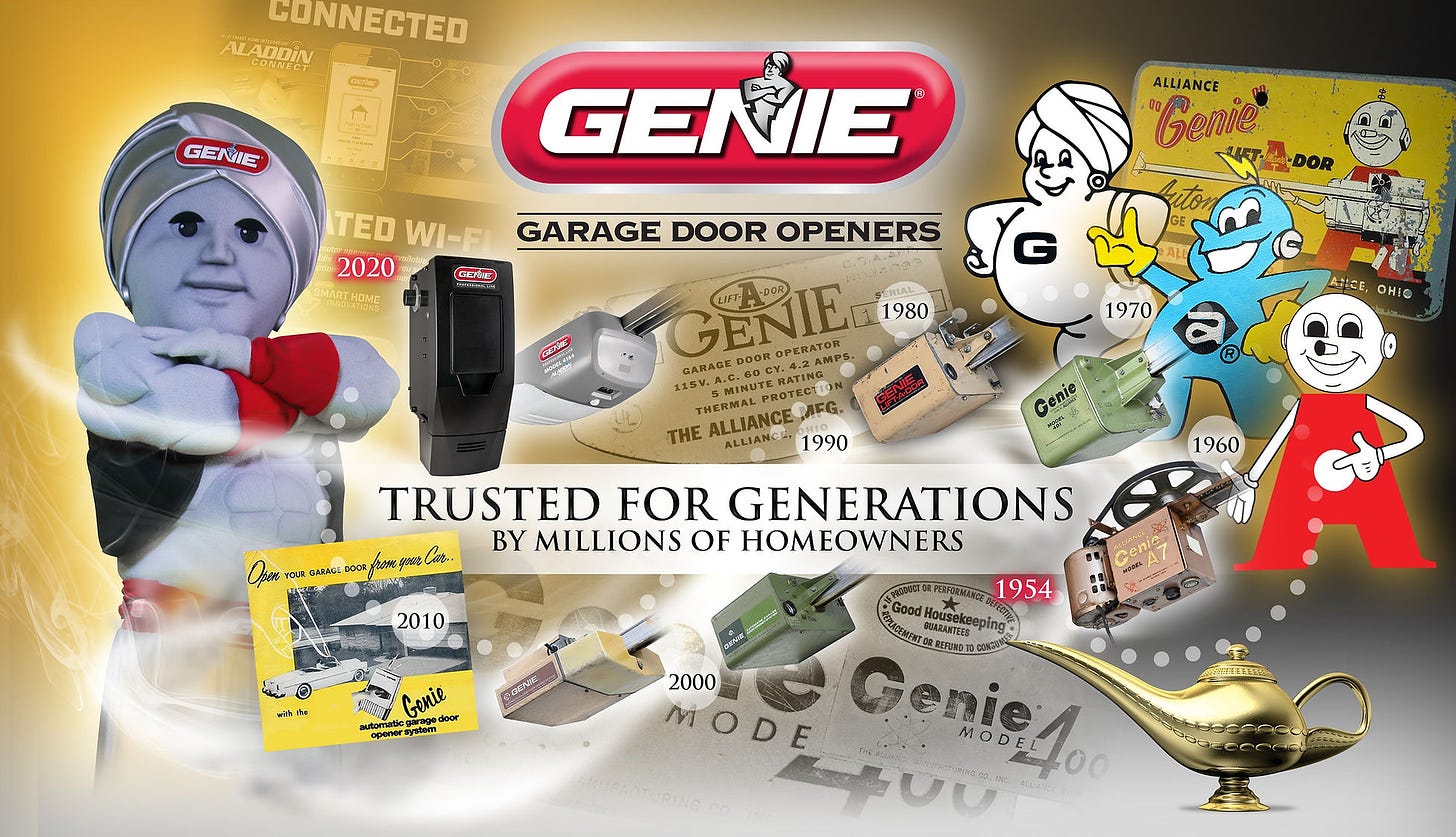
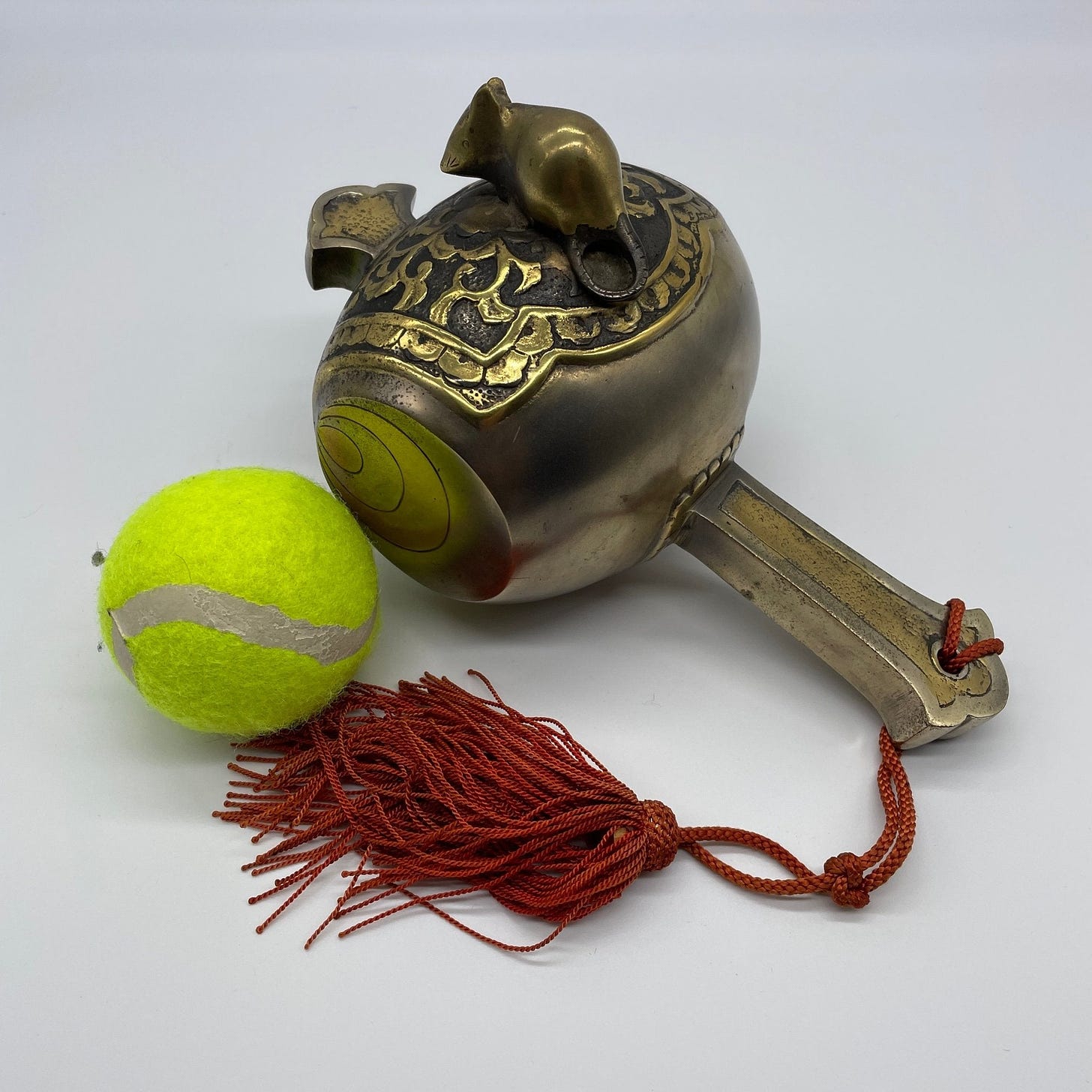
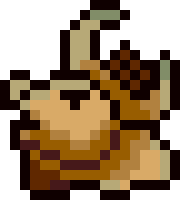
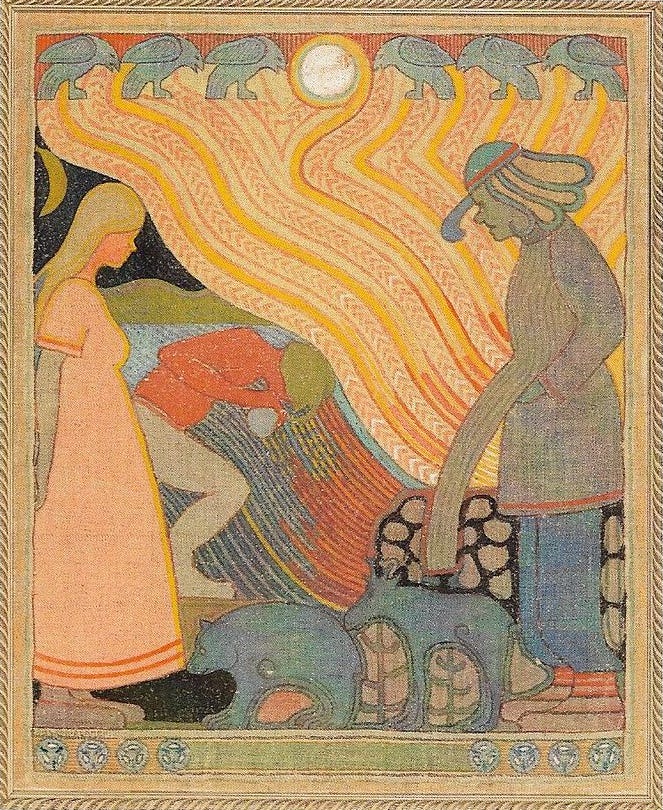
In Orkney, we have a version of the Sampo: a giant quern called Grotti, ground by giants Fenia and Menia, which could grind whatever you wanted. Through a series of misadventures it ended up at the bottom of Scapa Flow grinding out salt, and that's why the sea is salt and why there's a whirlpool there. I think we got this story from Scandinavian folklore as bits of it are in the Eddas.
One misding on the list: https://en.m.wikipedia.org/wiki/The_Wishing-Table,_the_Gold-Ass,_and_the_Cudgel_in_the_Sack